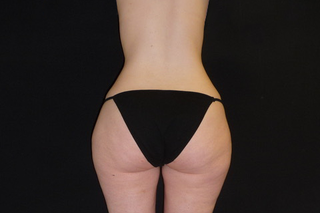I Bruse Really Easy and I Am Only 46
Lipoedema is an abnormal build-up of fat in your legs and sometimes arms. It can be painful and affect daily life, but there are things you can do that may help.
Check if you have lipoedema
Lipoedema is more common in women. It usually affects both sides of the body equally.




You may also have pain, tenderness or heaviness in the affected limbs, and you may bruise easily.
Lipoedema can also cause knock knees, flat feet and joint problems, which can make walking difficult.
It can be a difficult condition to live with and you may feel anxious or depressed.
Other causes of large or swollen legs
There are other things that can cause large or swollen legs.
If the skin on your legs is hard and tight but does not hurt when touched, it could be lymphoedema.
It's caused by a problem with the lymphatic system (a network of vessels and glands that help fight infection and drain excess fluid from tissues).
Sometimes, a build-up of fluid can cause the legs, ankles or feet to become swollen. This is called oedema. In lipoedema, the feet are not usually affected.
Read more about swollen legs, ankles and feet (oedema)
Non-urgent advice: See a GP if:
- you have symptoms of lipoedema
- you have swollen legs, ankles or feet and the swelling has not improved after a few days
Urgent advice: Ask for an urgent GP appointment or call 111 if:
- your leg or legs become swollen, red, hot and painful and you have flu-like symptoms
You may have cellulitis (a skin infection) and need treatment with antibiotics.
Treatments for lipoedema
If the GP thinks you have lipoedema they may refer you to a specialist for treatment.
There's currently no cure, but there are things that can help and stop it getting worse.
Your treatment will depend on how severe your symptoms are and how they're affecting you.
The main treatments are:
- eating healthily, doing more exercise and trying to maintain a healthy weight
- wearing compression stockings or bandages to reduce pain and discomfort, and make it easier for you to walk
- looking after your skin – for example, by regularly using moisturising cream (emollients) to stop your skin drying out
- counselling or cognitive behavioural therapy (CBT) if you're finding it difficult to cope with your symptoms and you feel depressed
- a procedure to get rid of the fat (liposuction) if your symptoms are particularly severe – you may need more than one operation and it may not be available on the NHS
Compression therapy
Compression therapy can sometimes help manage lipoedema.
A specially trained clinician will assess you and recommend the most suitable type of compression.
LymphCare has more information about compression therapy.
Information:
Getting support
Talking to someone and getting support can help if lipoedema is affecting your quality of life.
Lipoedema UK and Talk Lipoedema can give you help and advice about managing the condition. They can also put you in touch with other people with lipoedema.
Causes of lipoedema
The exact cause of lipoedema is not clear.
It's not caused by being overweight – you can be a healthy weight and still get it.
It may be caused by changes in your hormones:
- during puberty
- when you're pregnant
- when you're going through the menopause
- when you're taking the contraceptive pill
Sometimes lipoedema runs in families.
Page last reviewed: 29 September 2020
Next review due: 29 September 2023
Source: https://www.nhs.uk/conditions/lipoedema/
0 Response to "I Bruse Really Easy and I Am Only 46"
Post a Comment